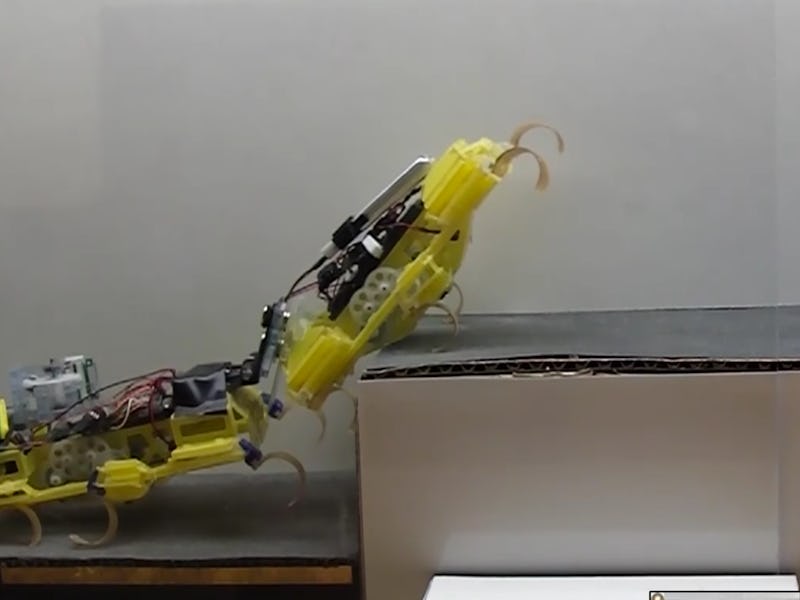5 Disposable Robots That Could Assist Search and Rescue Operations
They are jumping, flying, and crawling into action.

Finding people trapped under rubble is one of the biggest struggles of earthquake rescue operations. Current technology identifies heartbeats underneath the rubble and rescue workers on hand have to start digging to get to the source. But, what if there was a swarm of cheap micro robots autonomously climbing through the destruction to find survivors?
That’s precisely what researchers at University of California Berkeley’s Biomimetic Millisystems Lab have developed. These small micro-bots, some as small as a quarter, are inspired by the odd, ultrafast movements of insect legs.
The low-cost robots reportedly will run between $10 and $100 and can operate on a one-time use, disposable rescue mission. The research is funded by the National Robotics Initiative, part of the National Science Foundation.
The first three of the rather derpy robot designs below have debuted in the past month and the last two are some former designs from 2015, that could still be deployed in the field.
Jumping Roaches
This 10 centimeter long mini robot can jump two meters high to get over objects using spring board legs like a roach uses to jump. Once it has landed, wings expand to get it back upright and then it can scurry along to its destination.
Perhaps the coolest thing about this bot is that the crawler can autonomously adjust its speed and jumping power to vault itself on top or over various surfaces.
Step Climbing Robots
Two six-legged mini robots can work together like Australian jumping ants to traverse complex terrain. One robot first gets its front legs up over the step, the second robot attaches itself to the first via a string and pushes the first over the hump. Then the first robot is able to act as an anchor for the second robot to pull itself up.
It’s not as nimble and fluid as the Australian Jumping Ants yet, but one day this could be a dynamic climbing duo.
A robot folds a 3D structure made of ribbon.
Origami Robot
Berkley researchers have made a robot that can fold ribbon from a two-dimensional plane into a three dimensional object. That may not sound all that impressive, but they hypothesize that these ribbons could be made into replacement parts for the mini robots and one day make them self generating, or at least self healing.
“This suggests that one of the potential applications of the proposed method for robotic ribbon folding could be self-generation of structures for robotic self repair or shape adaptation,” researchers wrote in their report.
So, basically Berkeley is making The Terminator.
Running Robots
As if it were one of those slow motion insects on Planet Earth, this 54-gram robot speeds along the floor claiming to be the fastest robot in the world relative to its size.
The first time you watch the video you might even miss the little bugger altogether. Once it slows down, you can see how the researchers implemented its insect-like legs.
Robots With Flapping Wings
Using another roach robot as a launcher, the researchers were able to fly an autonomous flapping winged robot by bringing its to launch velocity with another insect robot.
You might be thinking, “Why not just use a drone.” Well, the lab’s report claims “flapping-winged robots can have energy advantages over rotary and fixed wing fliers,” and that may allow systems of this small size to carry more weight.